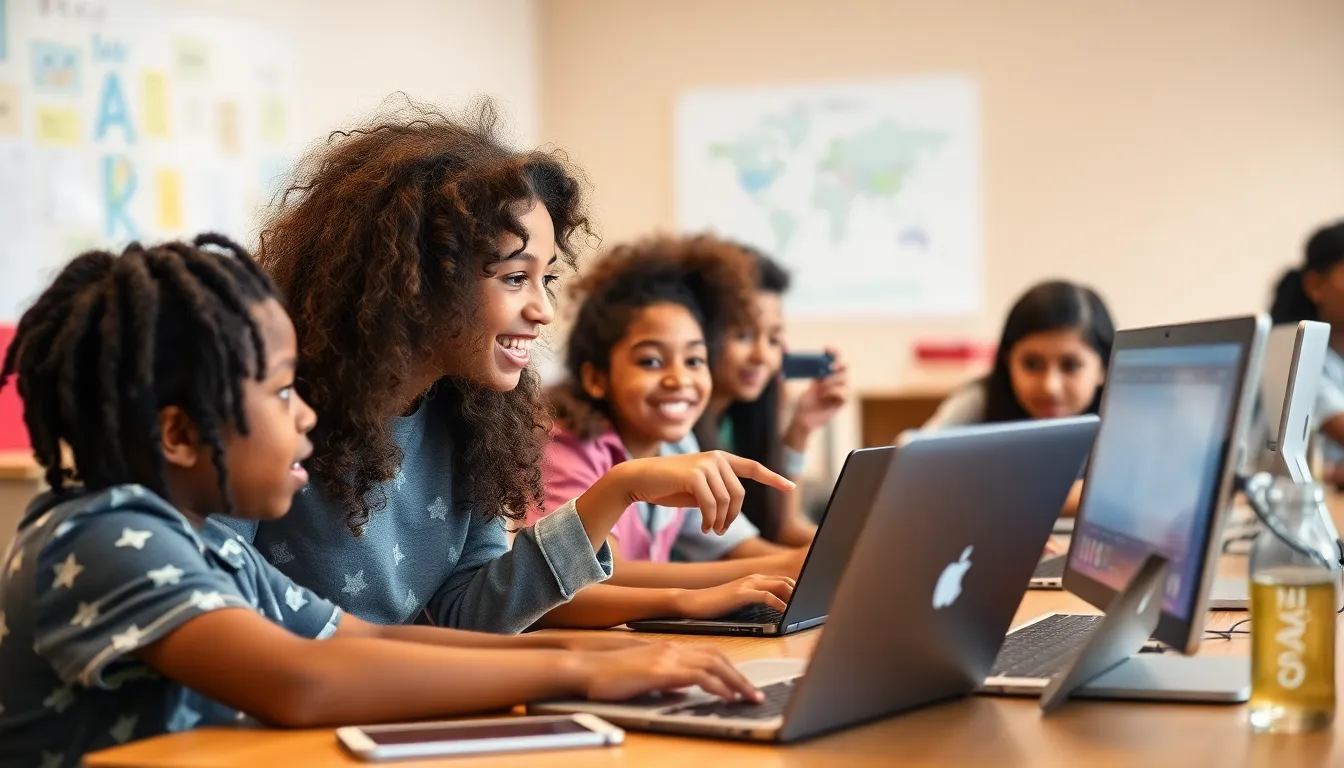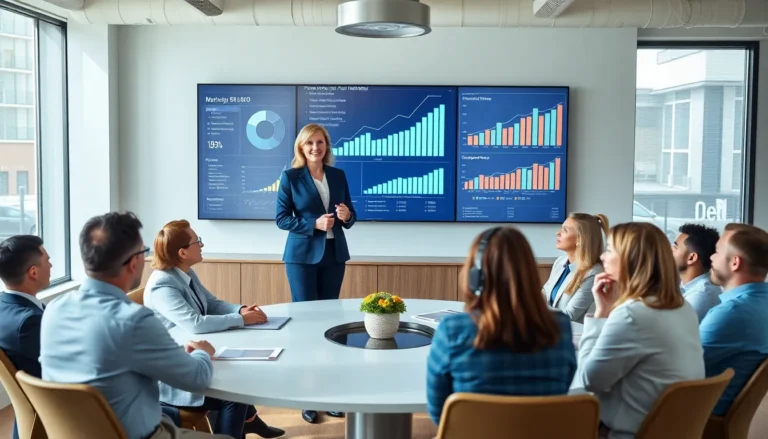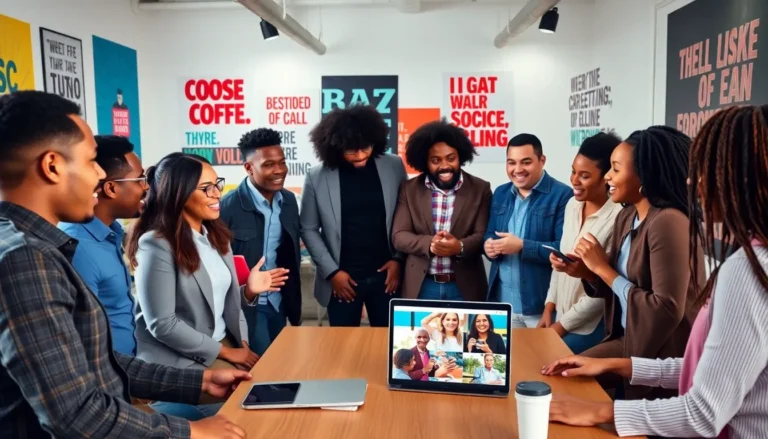In today’s tech-savvy world, coding isn’t just for computer whizzes in hoodies. It’s becoming as essential as learning to read and write. Imagine your child not just playing video games but creating them! Coding for young students opens up a universe of creativity and problem-solving skills, all while having a blast.
Table of Contents
ToggleOverview of Coding for Young Students
Coding plays a crucial role in preparing young students for the future. It provides essential skills that extend beyond technology. Many educators recognize how coding fosters creativity. Engaging in coding challenges encourages critical thinking and problem-solving abilities among students.
Various platforms offer age-appropriate coding resources. Tools like Scratch, Blockly, and Code.org make learning interactive and fun. Such platforms allow students to create unique projects while developing programming skills. Students often express excitement when they see their ideas come to life through coding.
Access to coding education has expanded dramatically. Schools and after-school programs frequently incorporate coding into their curriculums. Teaching coding at an early age instills confidence. Young learners can tackle complex problems through hands-on experience.
Coding’s interdisciplinary nature enhances learning in science, math, and art subjects. It provides a framework for understanding logic and sequencing. Students can apply these concepts to real-world situations. A coding foundation prepares them for diverse career paths in an increasingly digital world.
Incorporating coding into education cultivates lifelong learners. Young students develop resilience as they work through challenges. They also learn to collaborate by participating in group coding activities. Overall, coding equips students with skills necessary for tomorrow’s innovations.
Benefits of Early Coding Education
Early coding education offers numerous advantages for young students, preparing them for a technology-centric world. Among these benefits are enhanced problem-solving skills and increased creativity and innovation.
Enhancing Problem-Solving Skills
Coding equips students with the ability to approach problems logically. Students learn to break complex tasks into manageable parts, fostering critical thinking. Through coding challenges, they develop resilience as they troubleshoot and find solutions. Each error becomes a learning opportunity that sharpens their analytical skills. Engaging with coding teaches them to devise multiple solutions for a single issue, encouraging flexibility in thinking. As they tackle puzzles in coding environments, students gain confidence in their ability to overcome obstacles.
Encouraging Creativity and Innovation
Education in coding stimulates creativity among young learners. Through coding projects, students express unique ideas and design solutions. They craft stories, games, and interactive applications, turning abstract concepts into tangible creations. This creative outlet encourages experimentation, allowing students to explore their potential without fear of failure. Collaborative projects enhance their innovation, as teamwork generates diverse perspectives. With coding, imagination meets technology, inspiring students to think outside the box.
Popular Coding Languages for Beginners
Learning coding begins with user-friendly languages that simplify the initial experience. Young students often excel with languages designed for ease of use and engagement.
Scratch
Scratch provides an intuitive platform focusing on graphical programming. Students create interactive stories, games, and animations by snapping together code blocks. The blocks represent various programming concepts without complex syntax. This language cultivates creativity, encouraging young coders to express their ideas visually. Scratch also promotes collaboration among users, allowing them to share projects and receive feedback. With a strong online community and extensive educational resources, teachers can easily integrate Scratch into the curriculum.
Python
Python stands out as a versatile language for beginners. Its syntax is straightforward and easy to read, making it suitable for young learners. Students can quickly grasp fundamental programming concepts like loops and conditionals. Python supports a wide range of projects, from simple scripts to complex applications. Resources such as CodeCombat and Codecademy offer interactive lessons tailored for children. Many educators recommend Python because it transitions well to advanced programming and real-world applications.
Effective Teaching Strategies
Effective teaching strategies for coding emphasize interactive and engaging methods. Young students grasp coding concepts more readily when they participate in hands-on learning experiences.
Interactive Learning Environments
Interactive learning environments captivate young learners. They benefit from platforms like Scratch, which allows for immediate feedback through visual coding. In these environments, students can experiment, make mistakes, and improve their skills progressively. Collaborative tools encourage teamwork, fostering communication and problem-solving among peers. Teachers can create simulations that mimic real-world coding scenarios, making lessons relatable. Integrating gamification into lessons enhances motivation, keeping students engaged. Learning becomes fun when challenges are presented in a game-like format. This approach not only strengthens technical skills but also builds confidence and enthusiasm for future coding projects.
Project-Based Learning
Project-based learning presents coding challenges in meaningful contexts. Students engage in projects that connect coding to real-life applications. They can develop games or create simple applications, which enhances understanding and retention. Each project encourages students to apply their knowledge, reinforcing essential skills like logic and sequencing. Furthermore, when they collaborate on projects, they cultivate teamwork and communication skills. Teachers can guide students through the design process, nurturing creativity and innovation. By showcasing completed projects, students gain a sense of accomplishment that motivates continued learning. This method fosters a deeper connection to coding, preparing young learners for future challenges in technology and beyond.
Resources for Parents and Educators
Various resources exist to support parents and educators in teaching coding skills to young students. Access to quality materials enhances engagement and learning outcomes.
Online Platforms
Popular online platforms provide interactive coding experiences for children. Websites like Scratch and Code.org promote creativity through engaging projects. Students create stories and games using simple block coding in Scratch, making programming accessible. Code.org offers step-by-step lessons that introduce basic coding concepts, making learning enjoyable. Additional platforms, such as Tynker, focus on game design and app development, providing a hands-on approach. These resources also encourage collaborative learning through community features, allowing students to share projects and ideas, ultimately enhancing their coding skills.
Books and Tools
Numerous books and tools cater to young learners interested in coding. “Hello Ruby: Adventures in Coding” introduces foundational concepts through storytelling and fun activities. This approach nurtures interest while simplifying complex ideas. “Python for Kids” by Jason R. Briggs brings programming to life with colorful illustrations and engaging projects, making Python approachable. Parents and educators benefit from incorporating coding kits like LEGO Mindstorms, which combine building and coding for a practical learning experience. Various resources, including online forums and communities, further support learners, encouraging exploration and collaboration in coding.
Conclusion
Embracing coding education for young students opens doors to a world of creativity and problem-solving. By integrating coding into their learning journey, students not only gain essential technical skills but also develop critical thinking and resilience. The interactive nature of coding fosters collaboration and innovation, making it an enjoyable experience.
As educators and parents support this initiative, they empower children to tackle complex challenges and express their unique ideas. With a wealth of resources available, the future of coding education looks bright, equipping the next generation with the tools they need to thrive in a technology-driven society.











